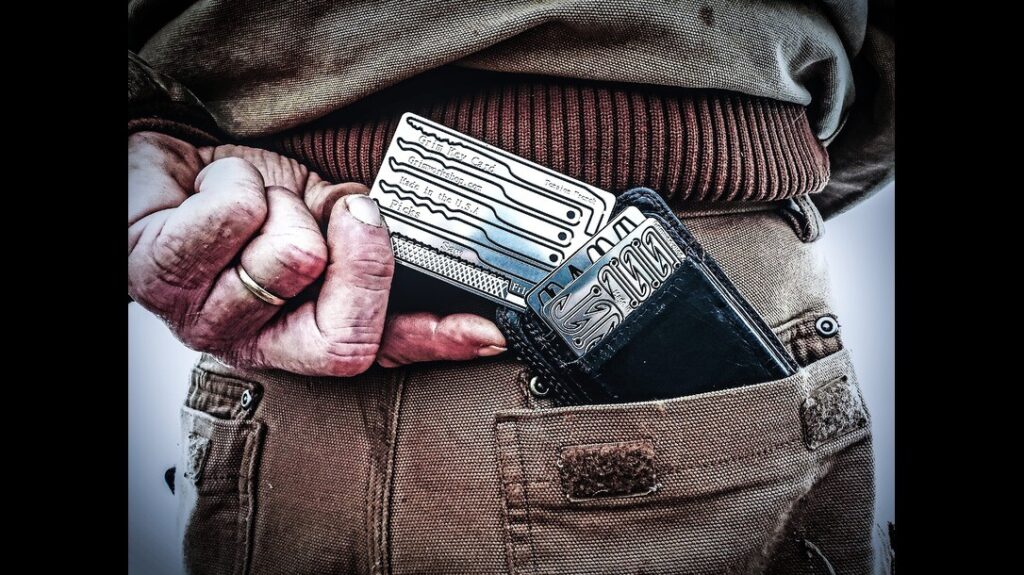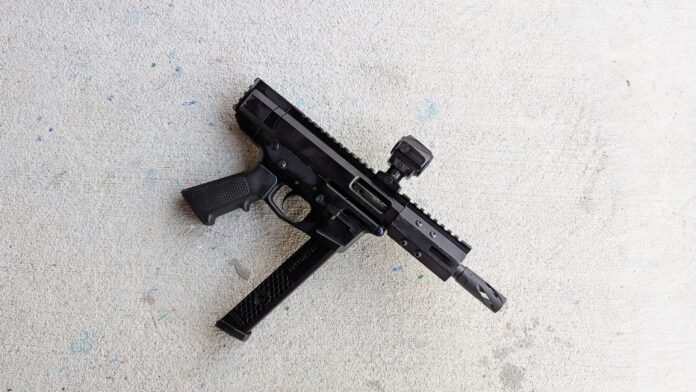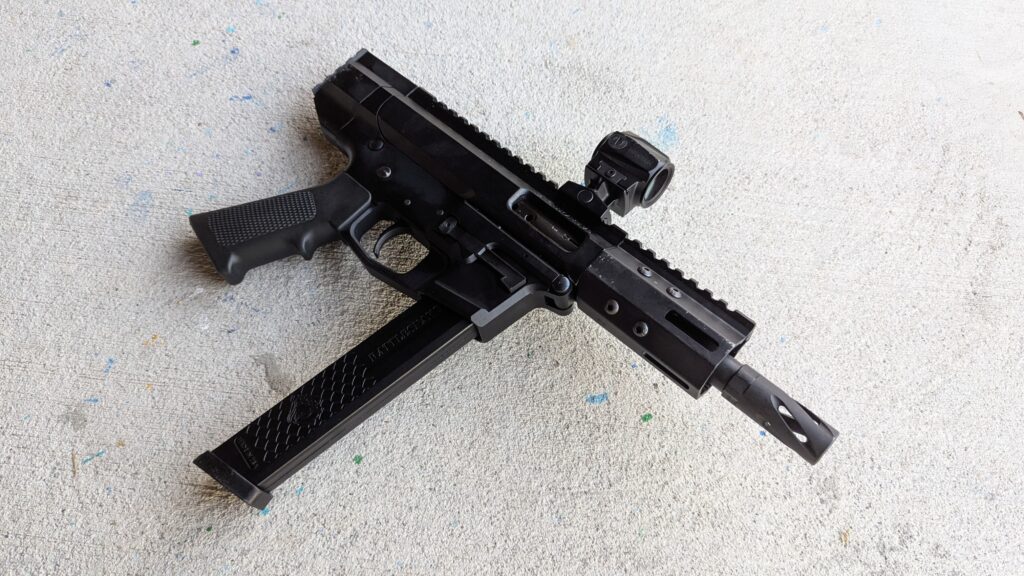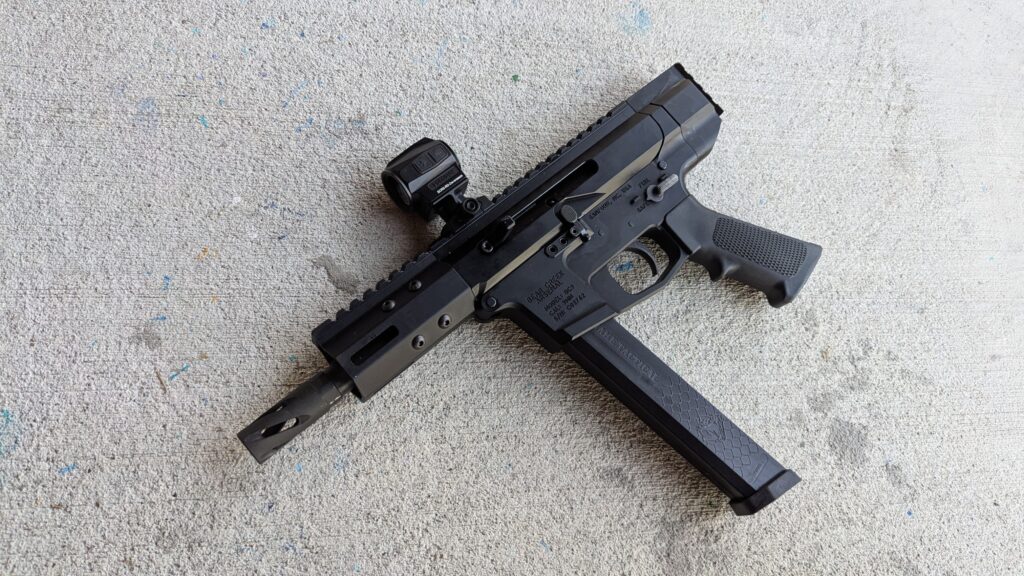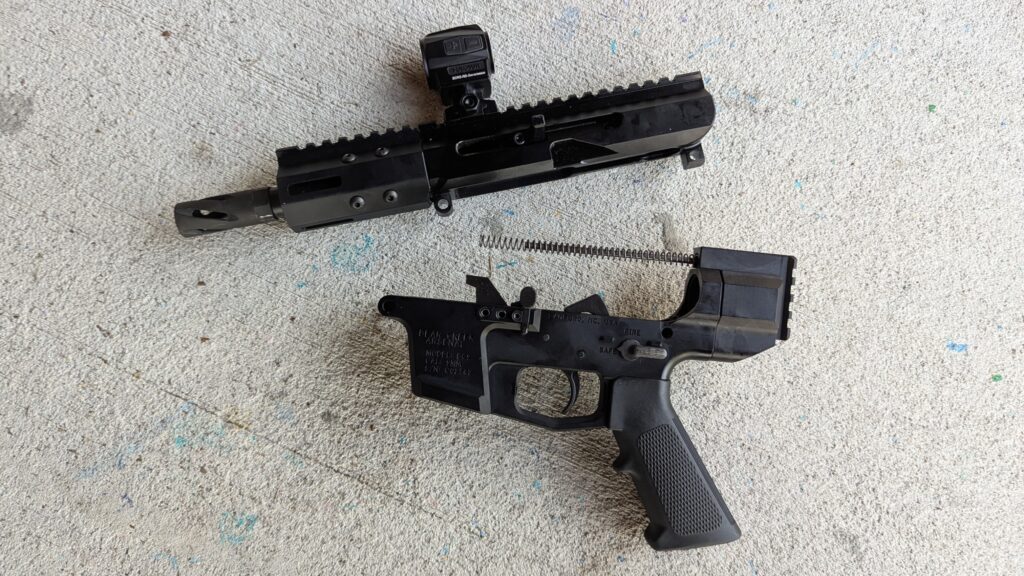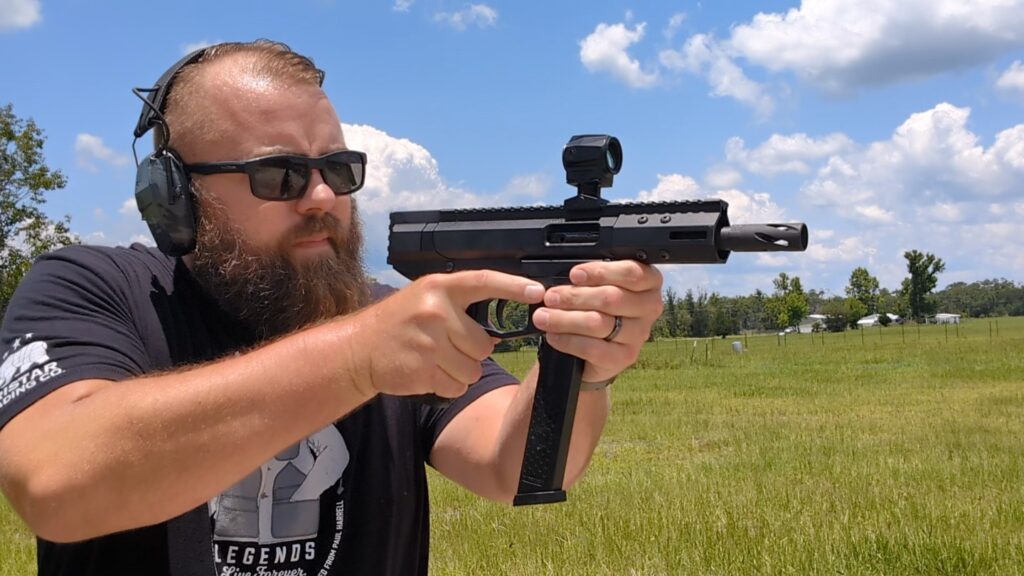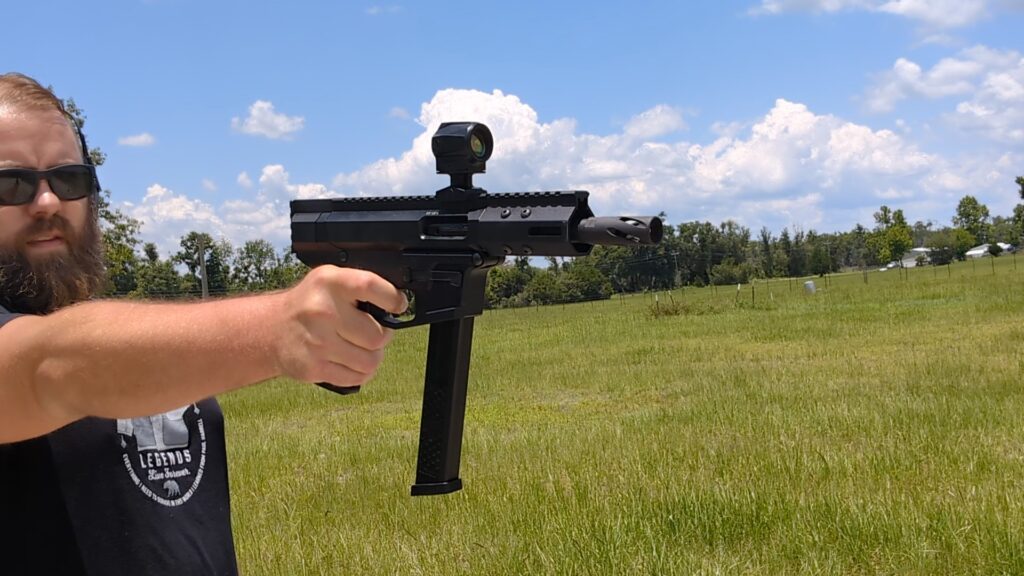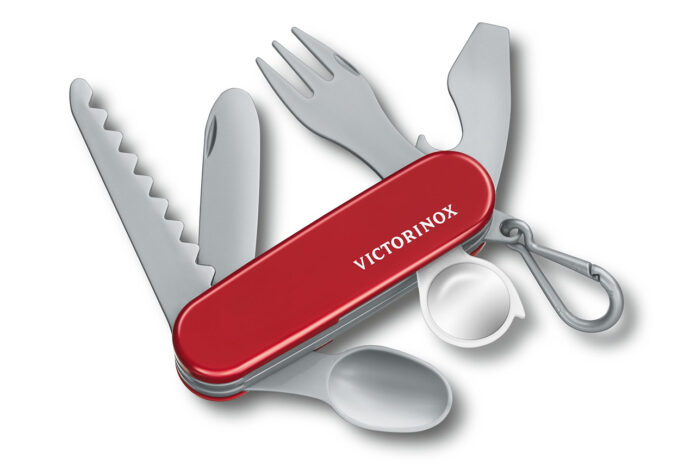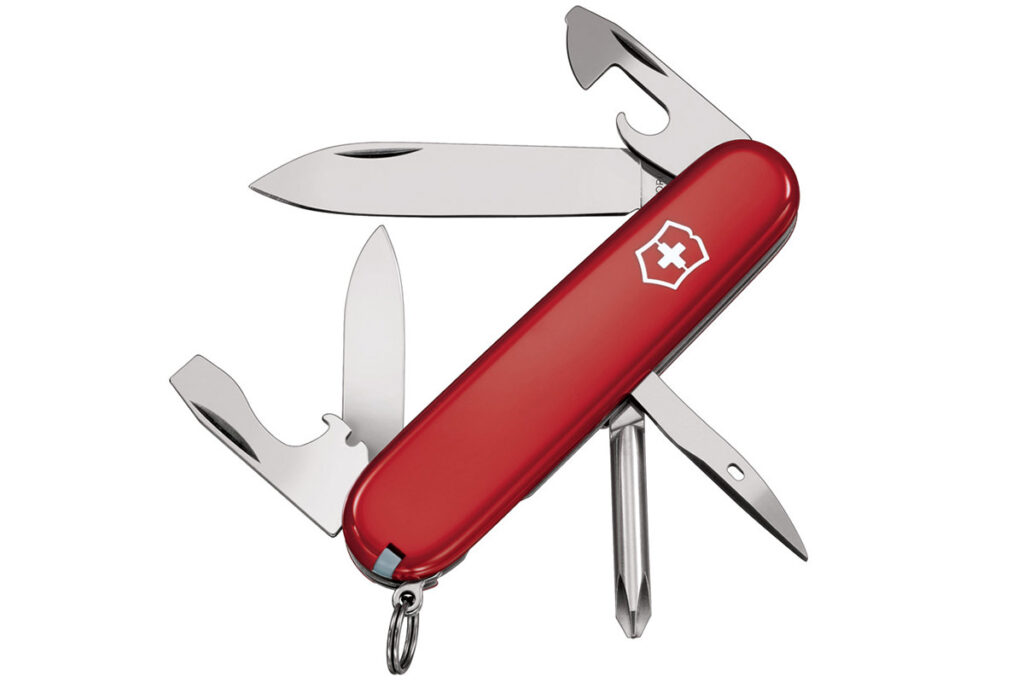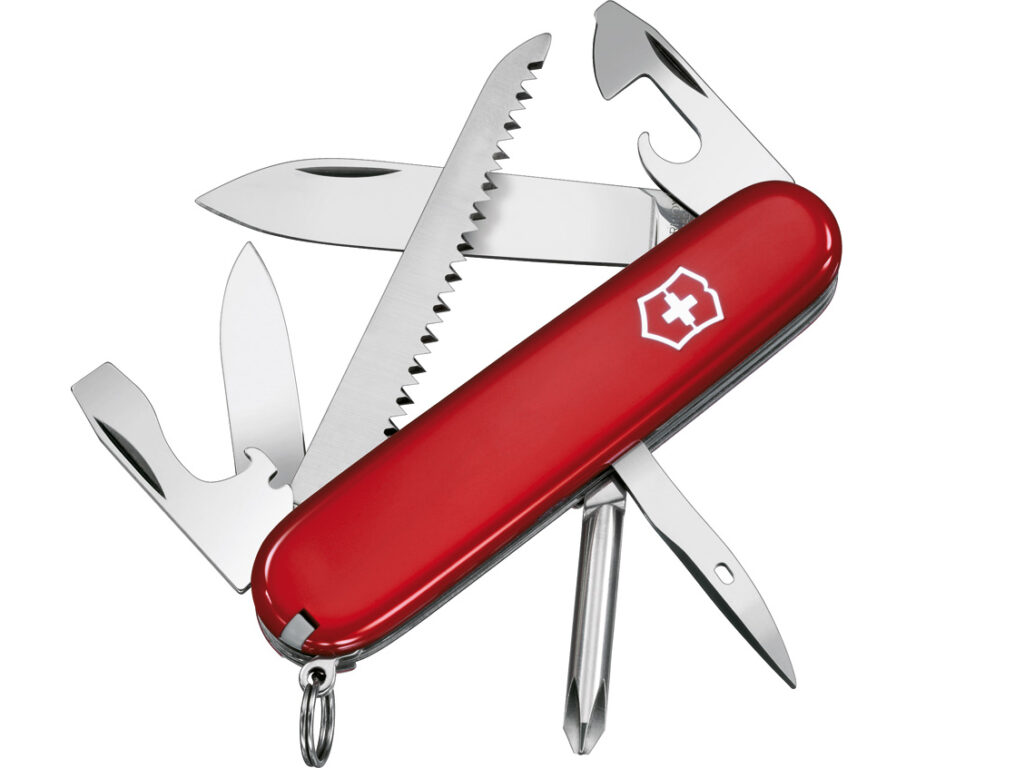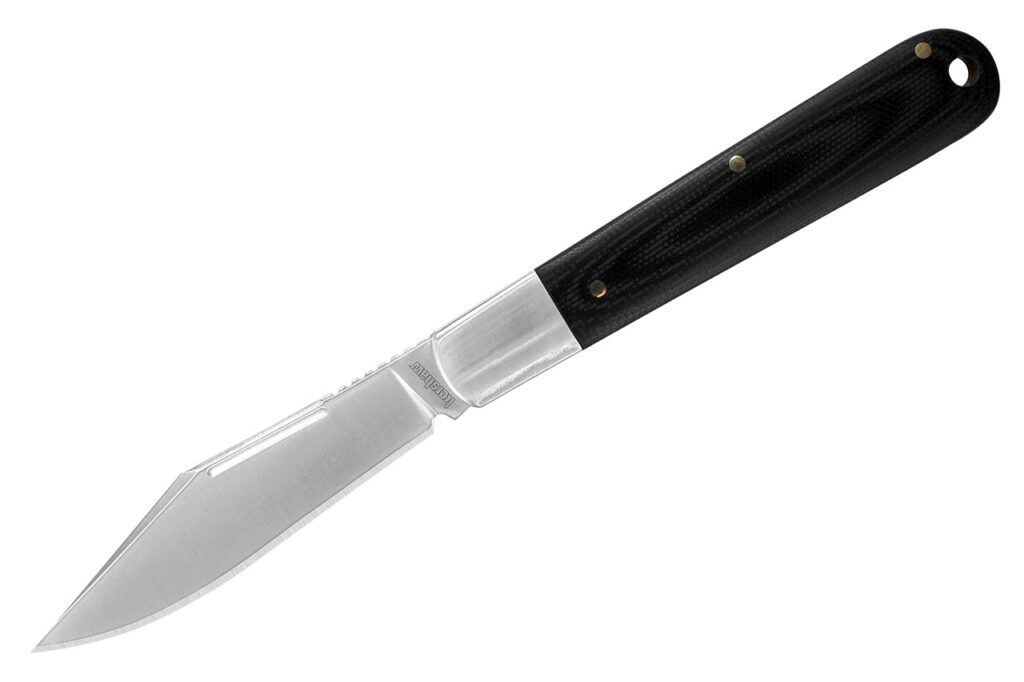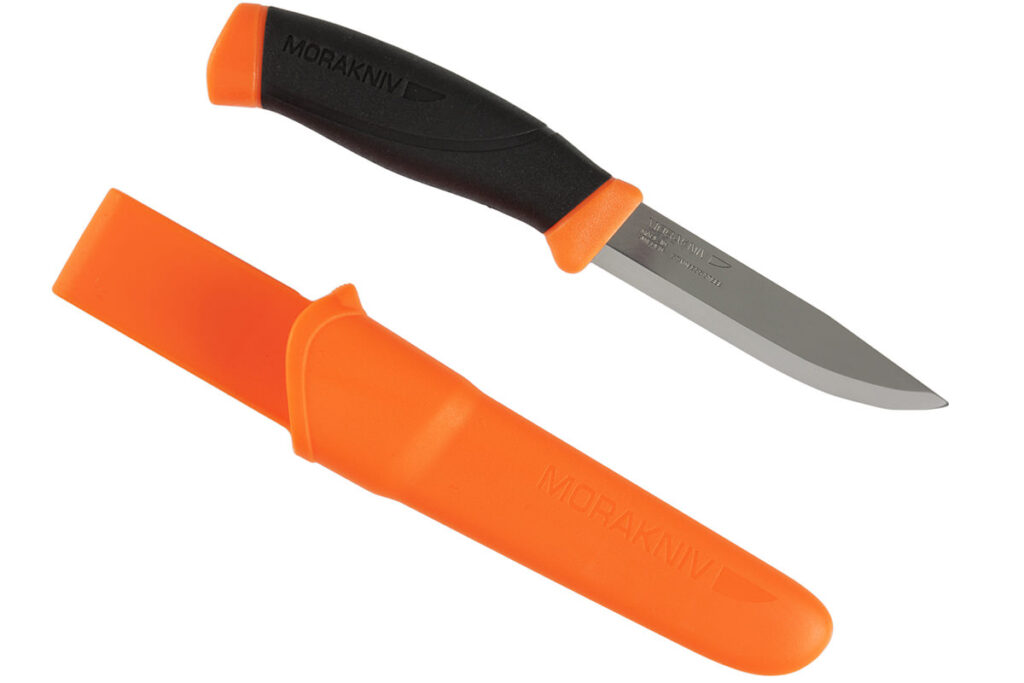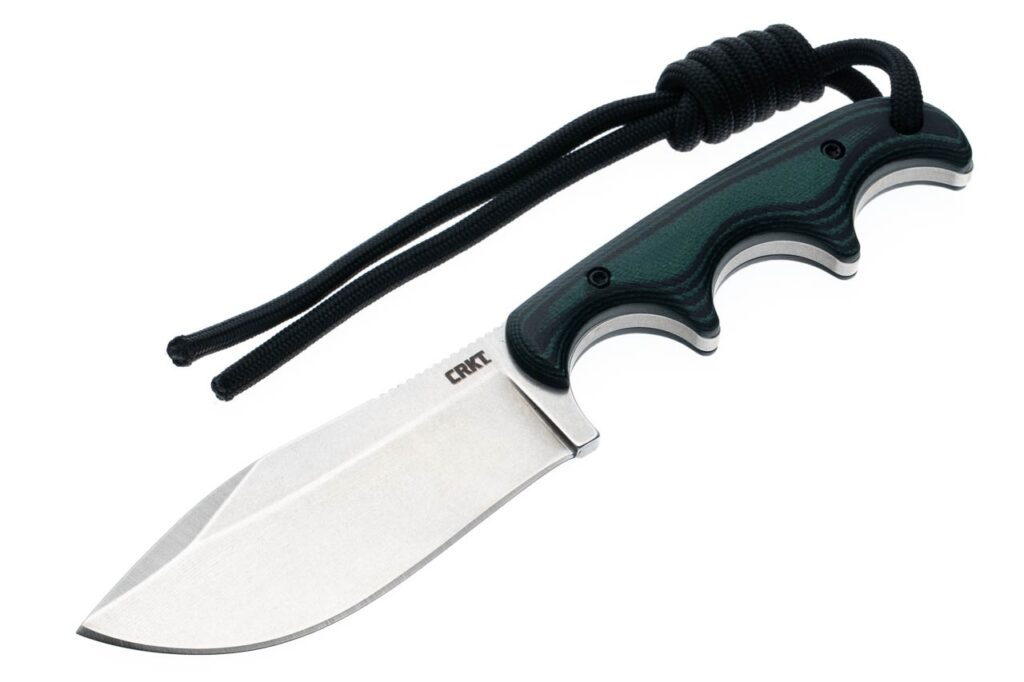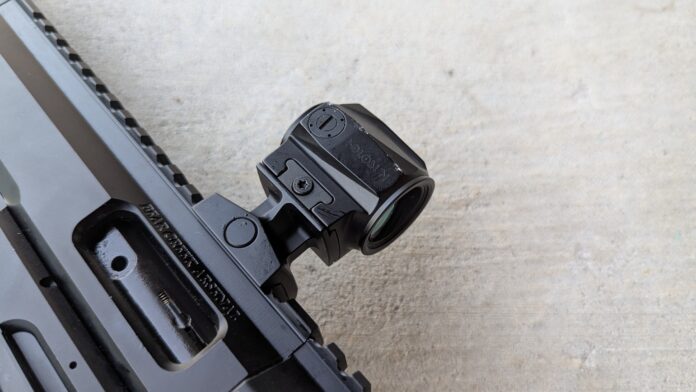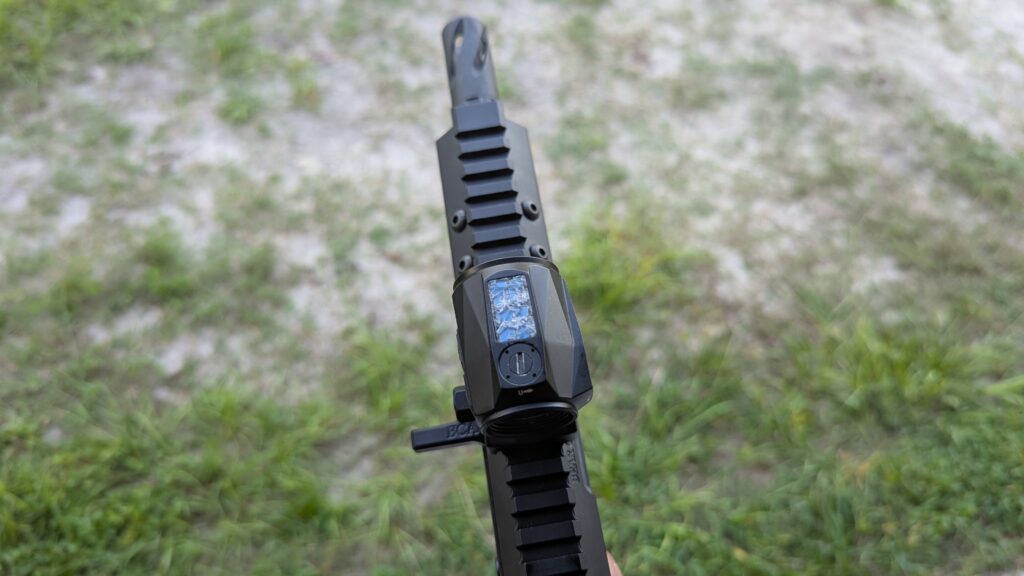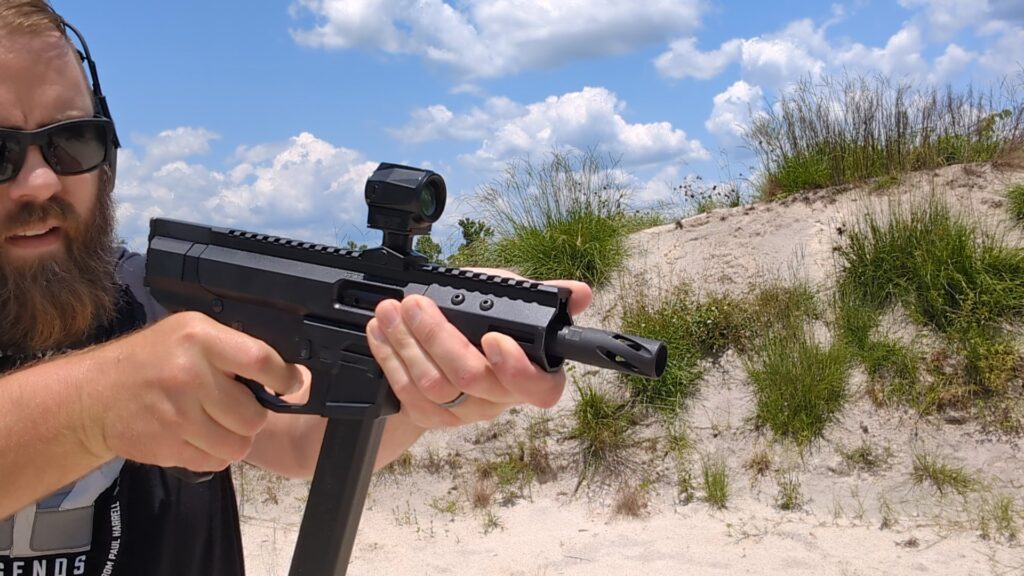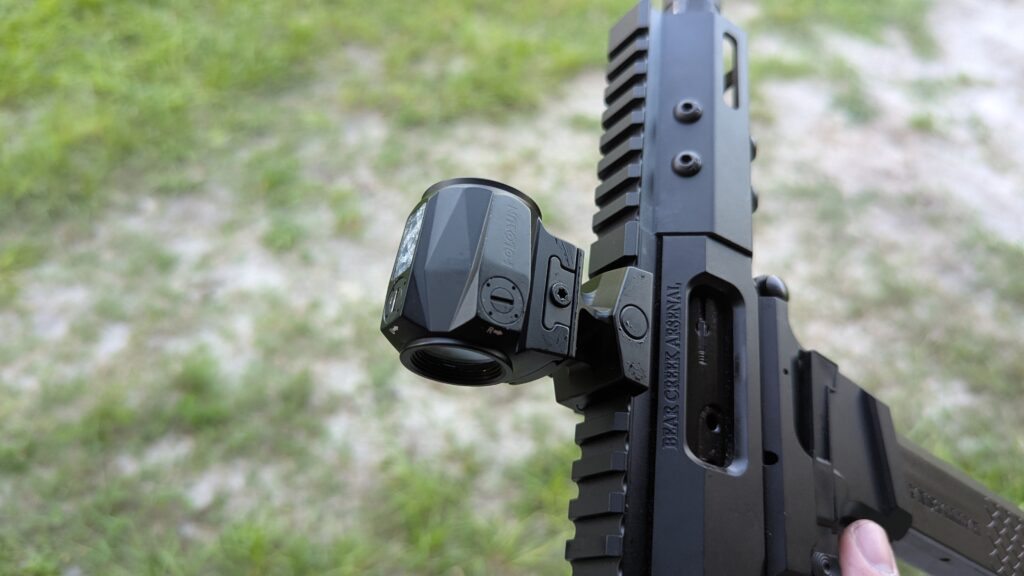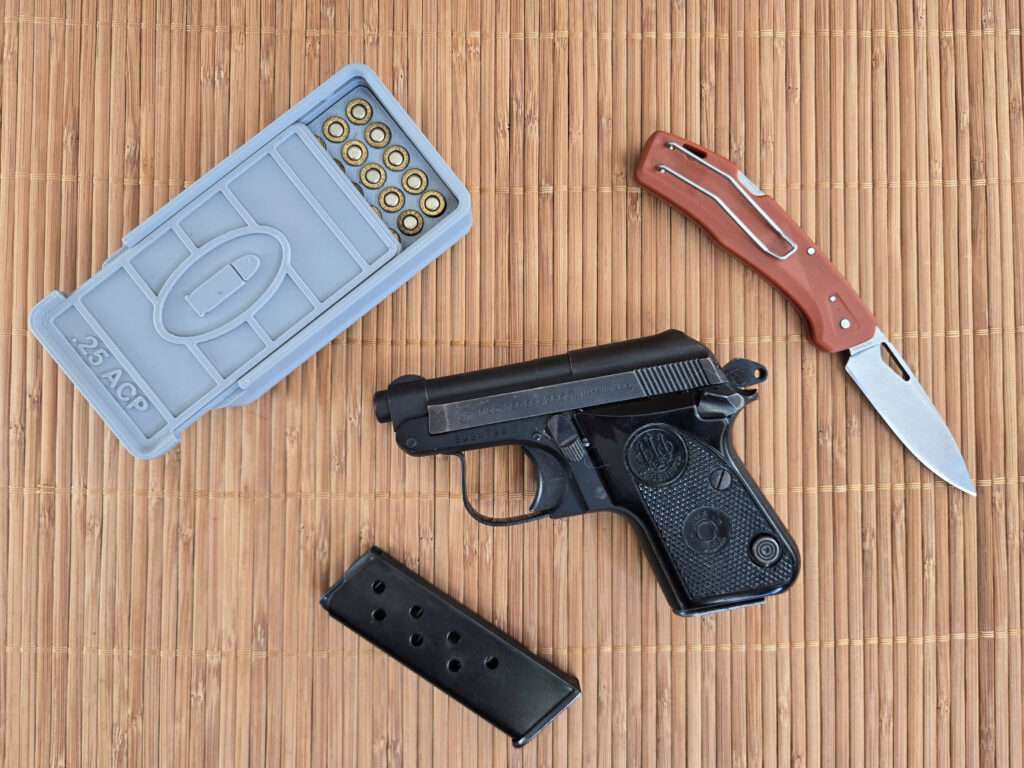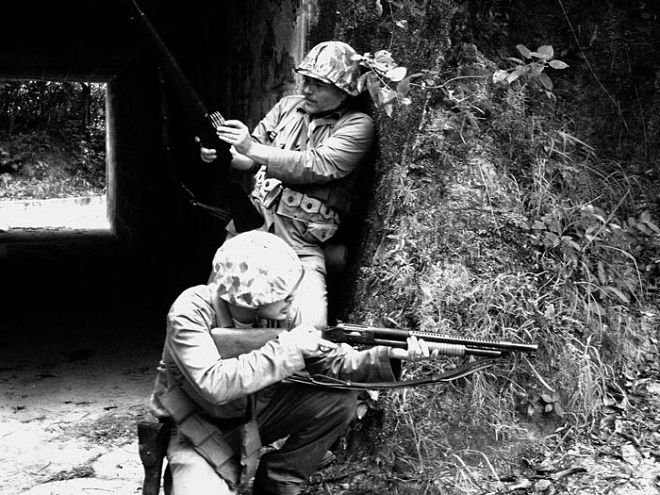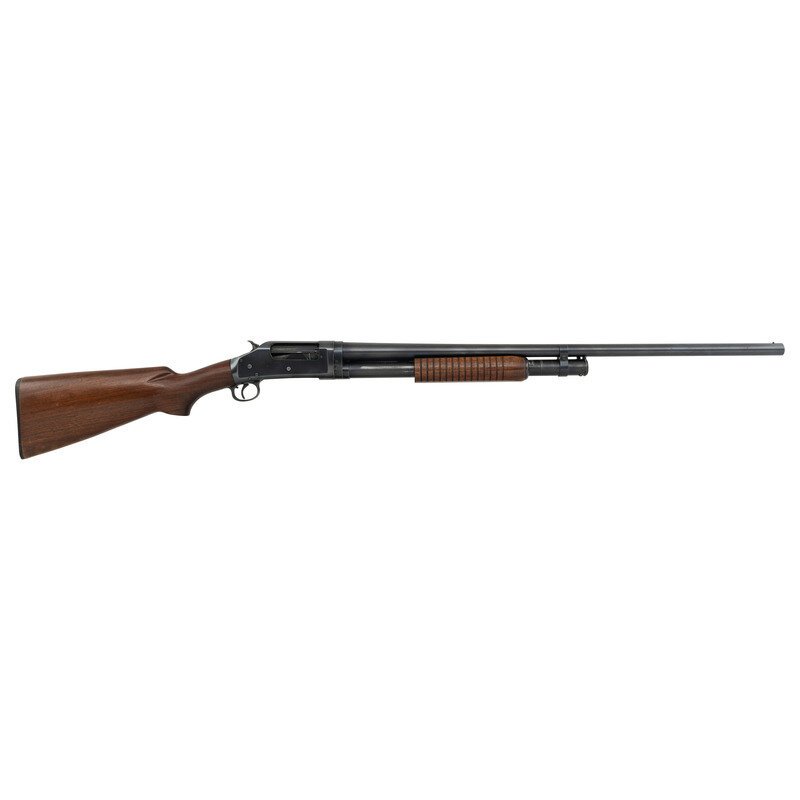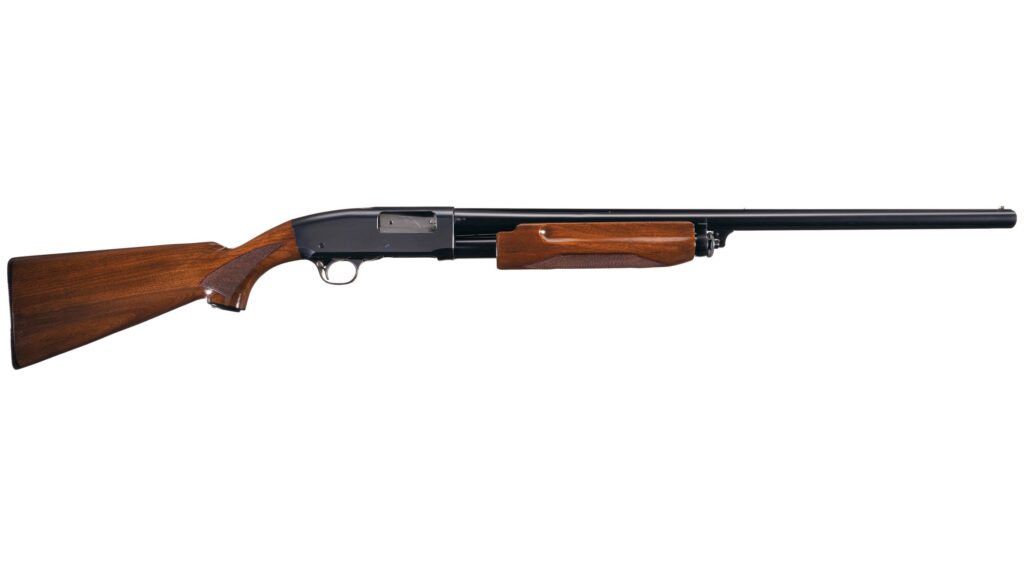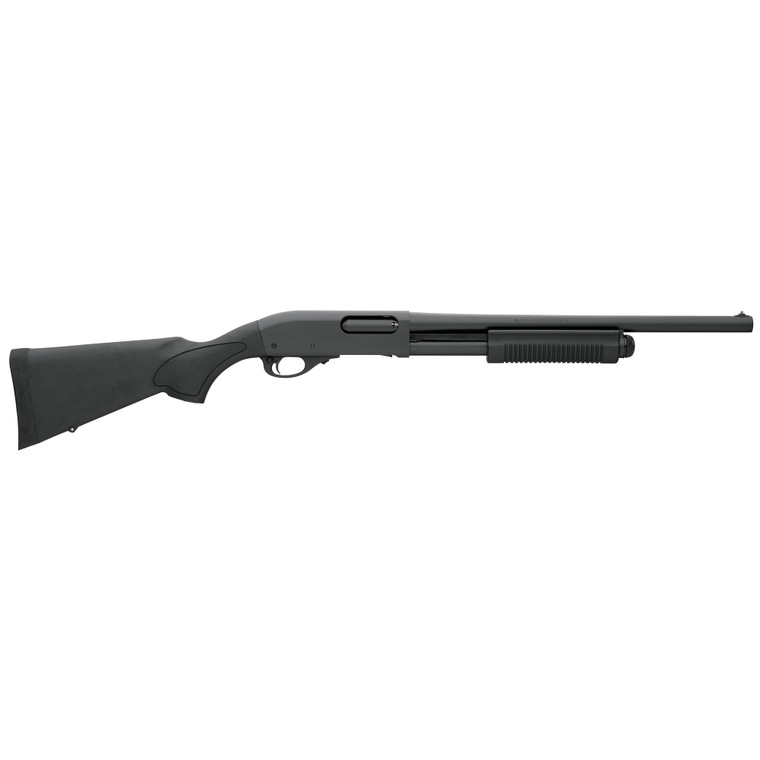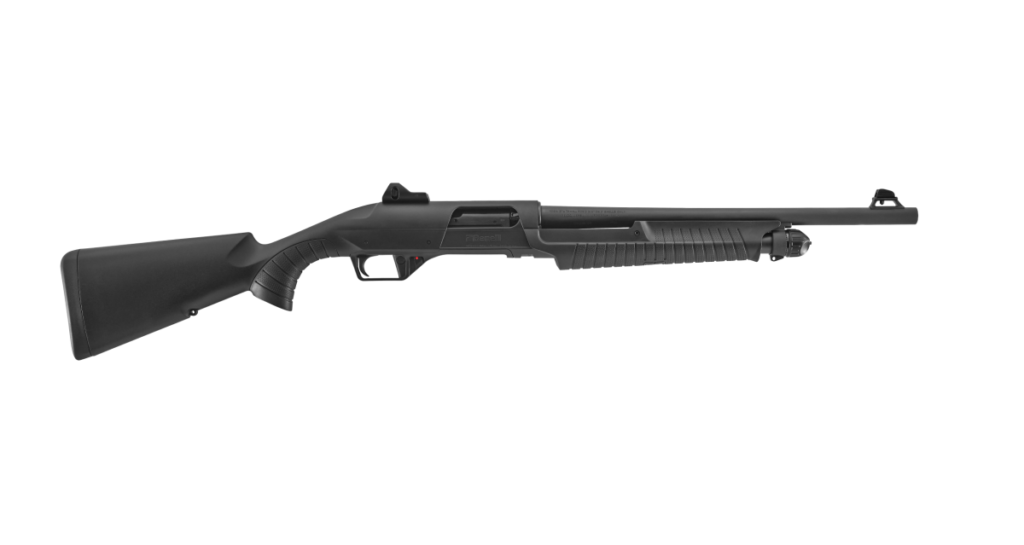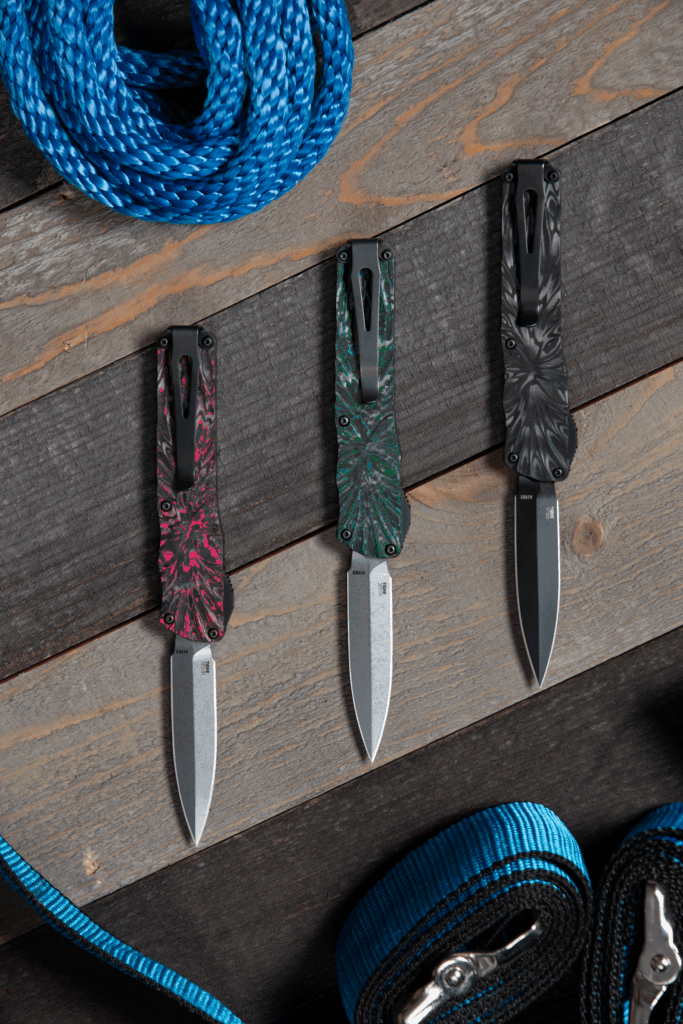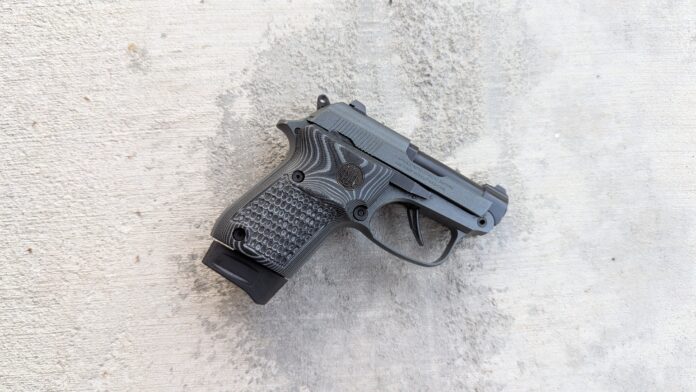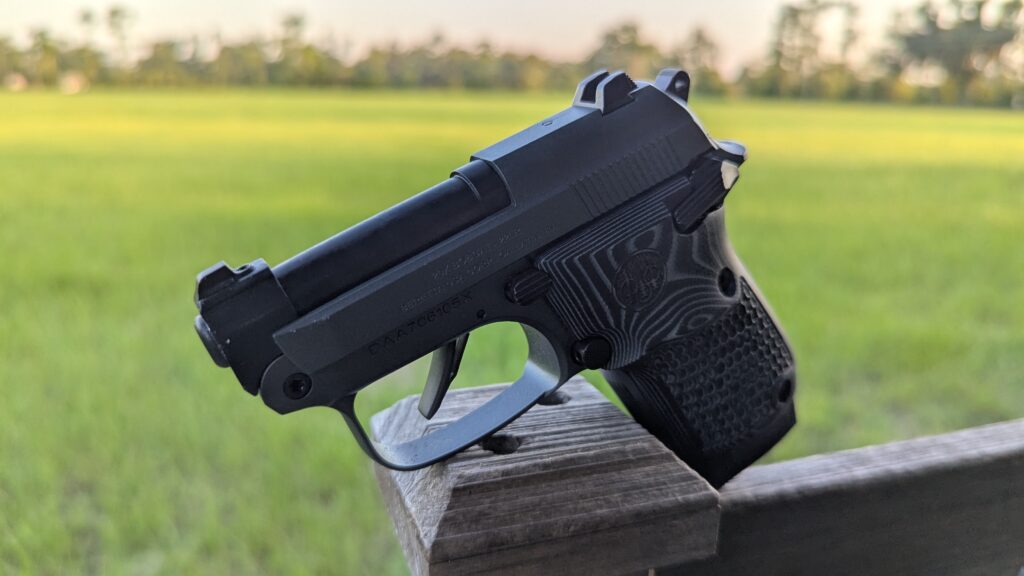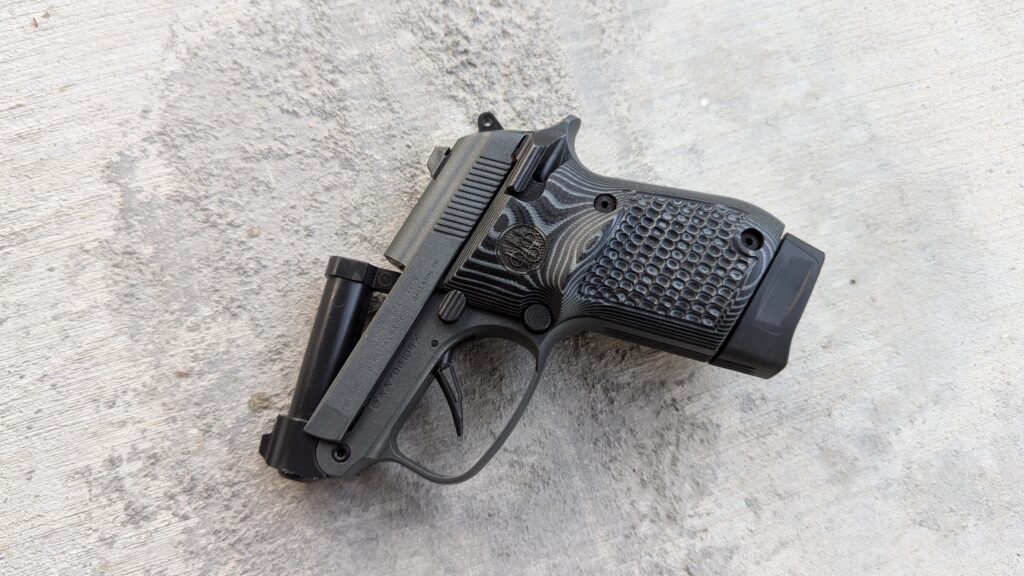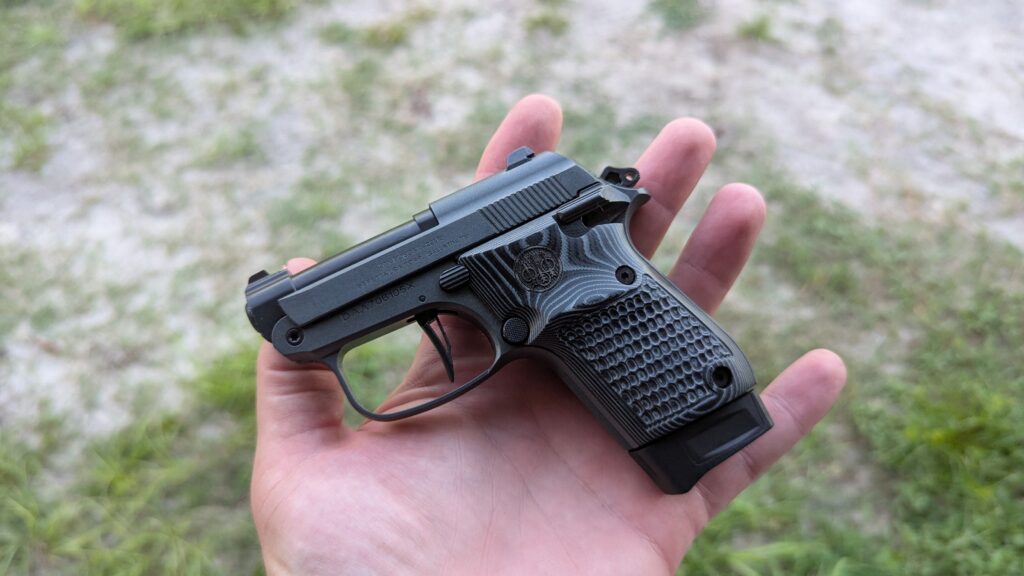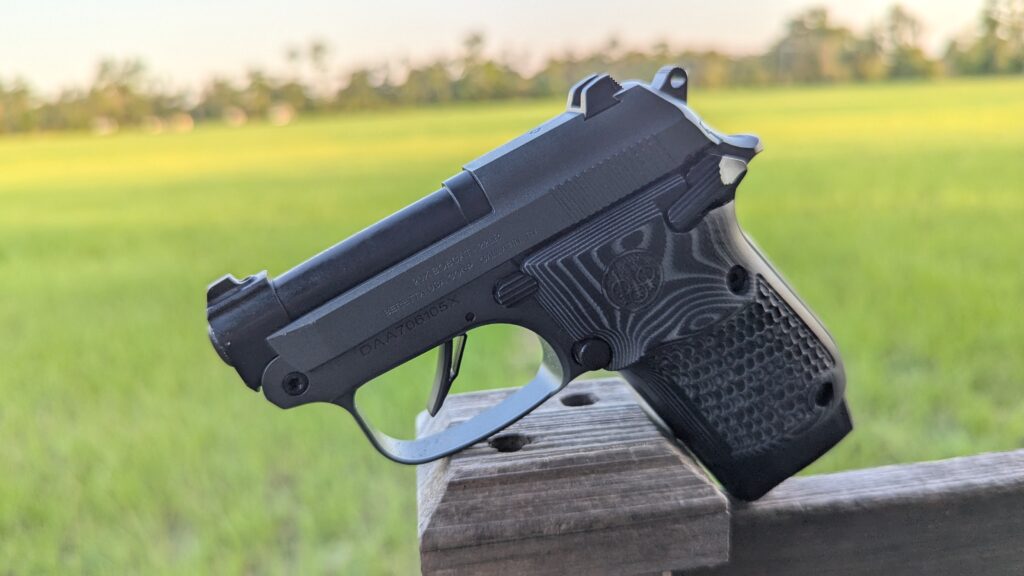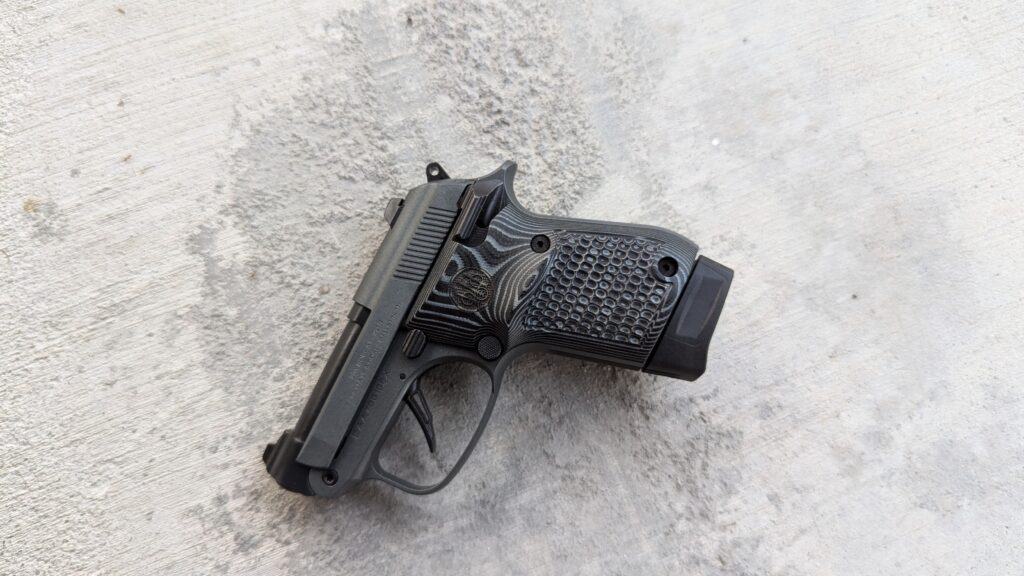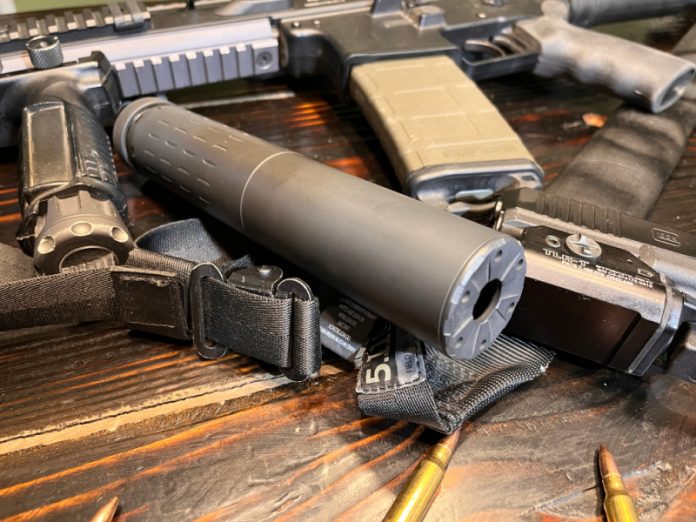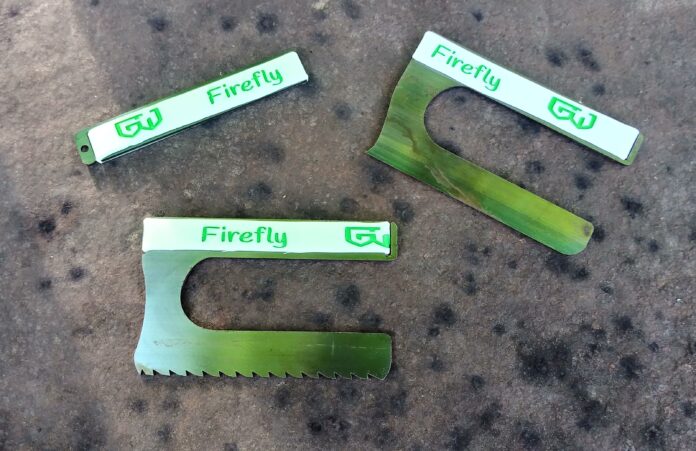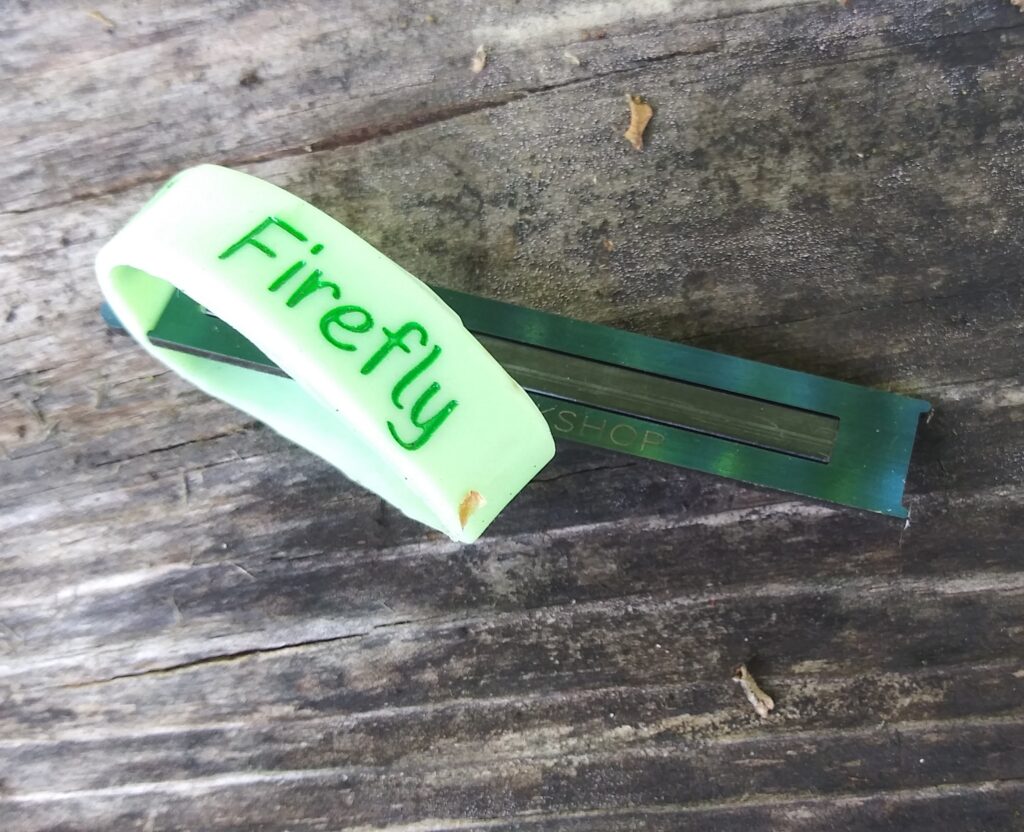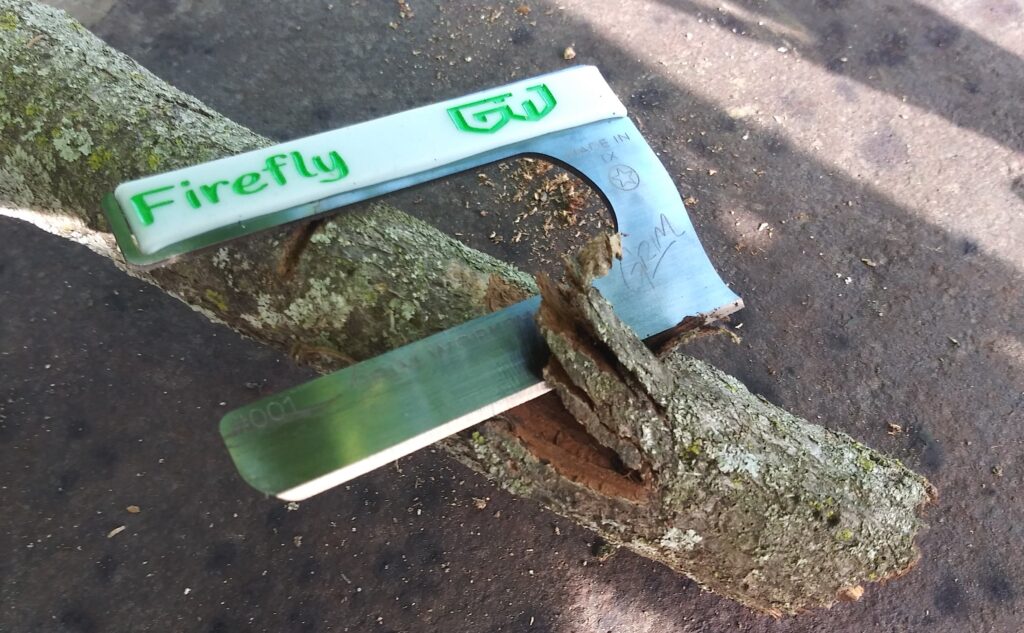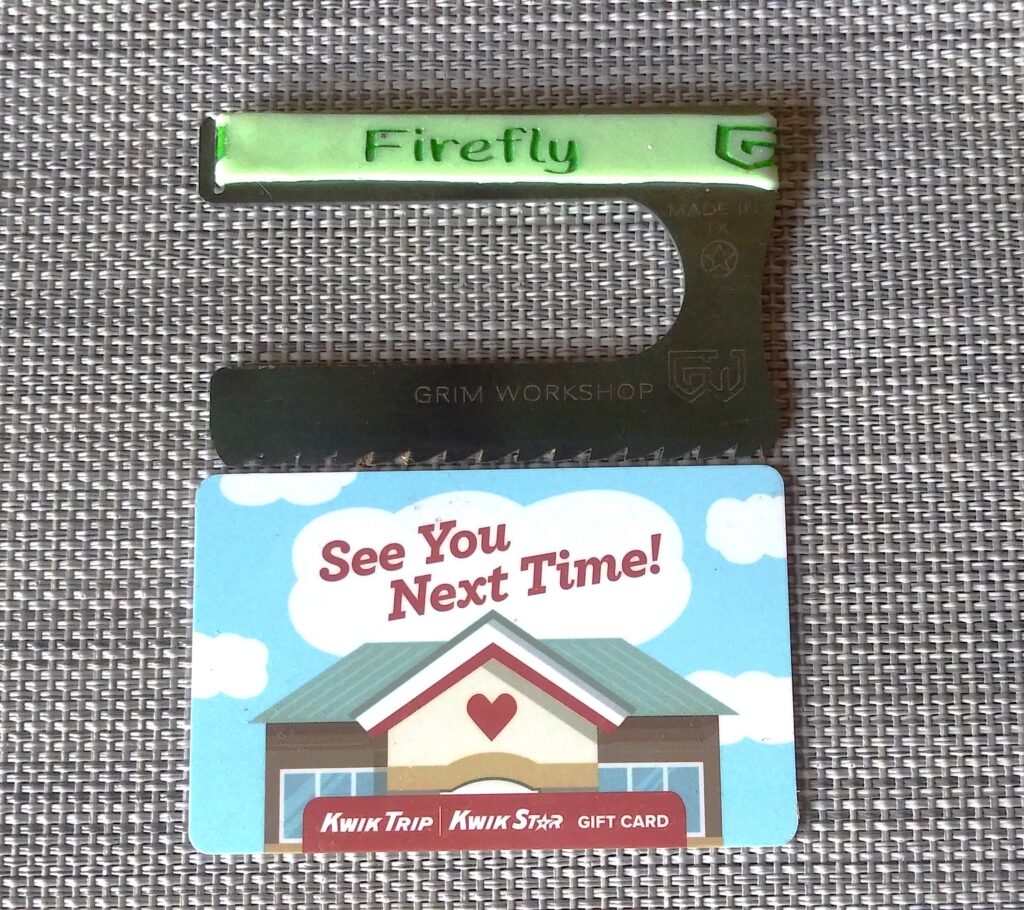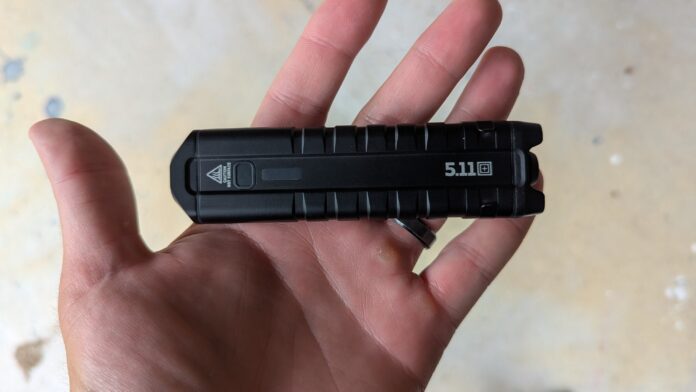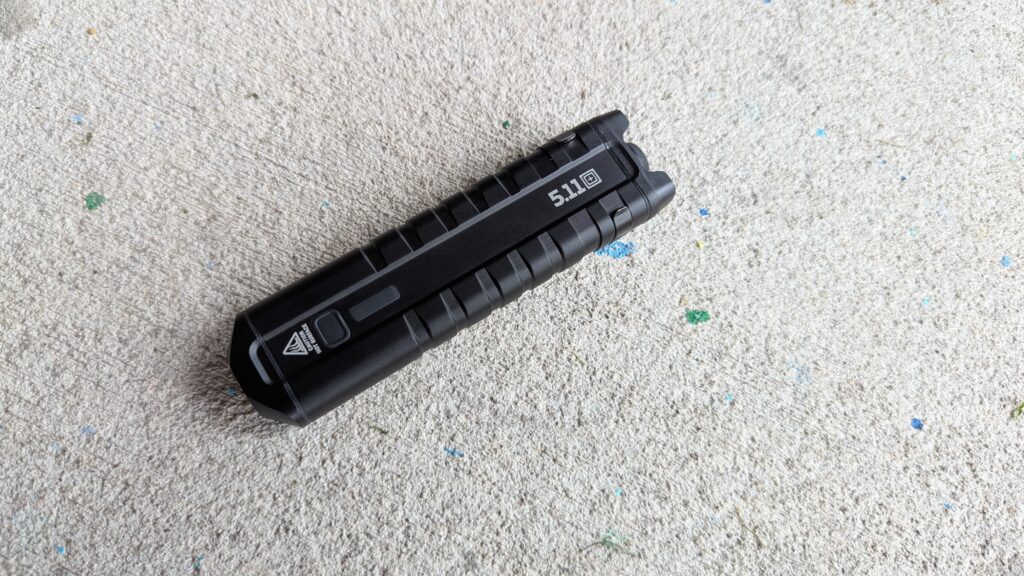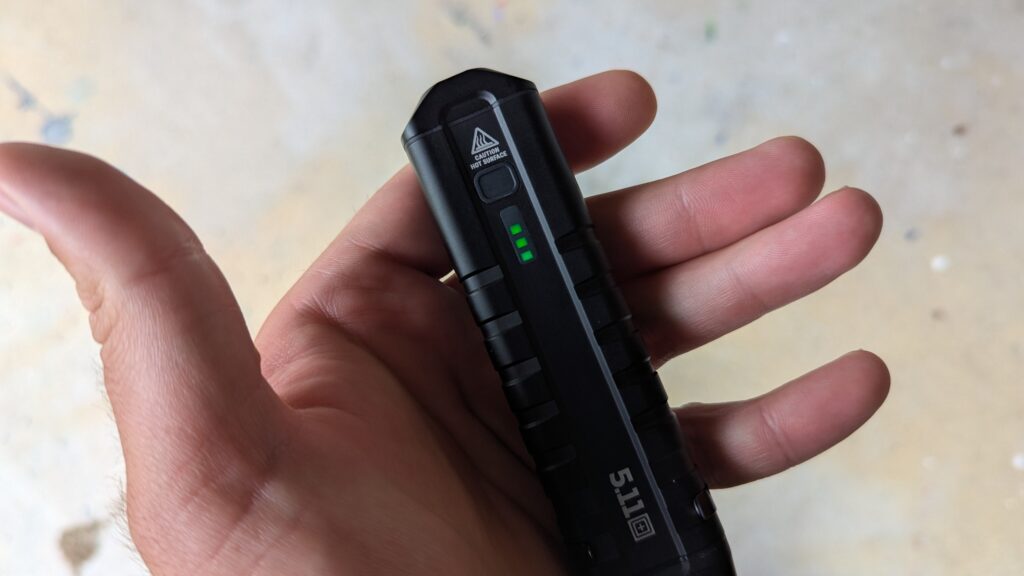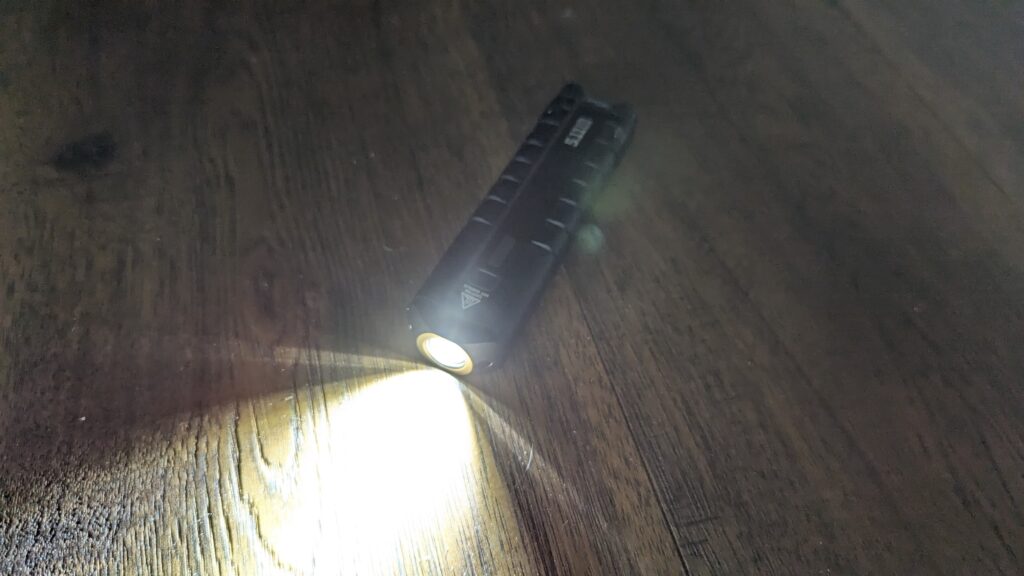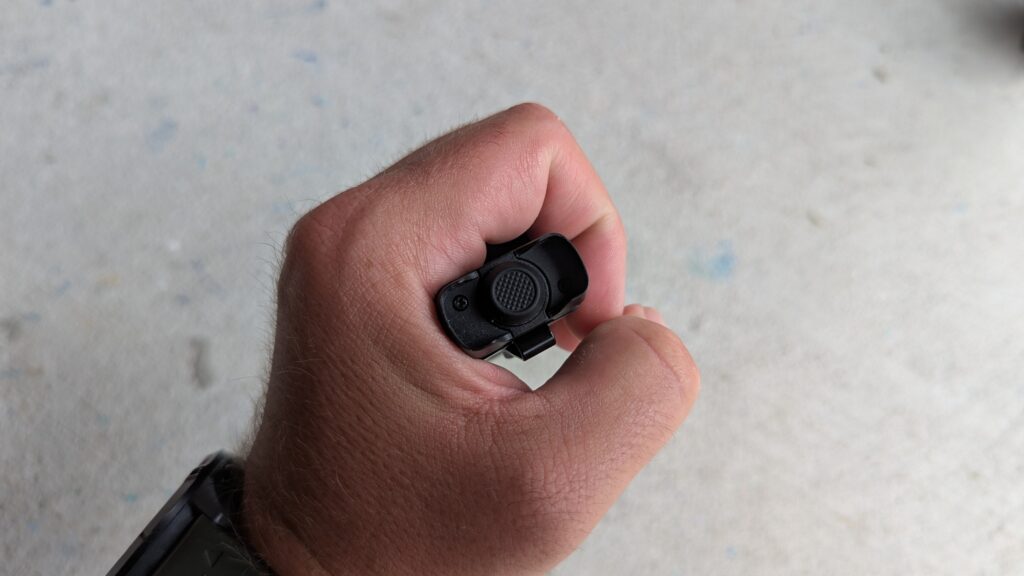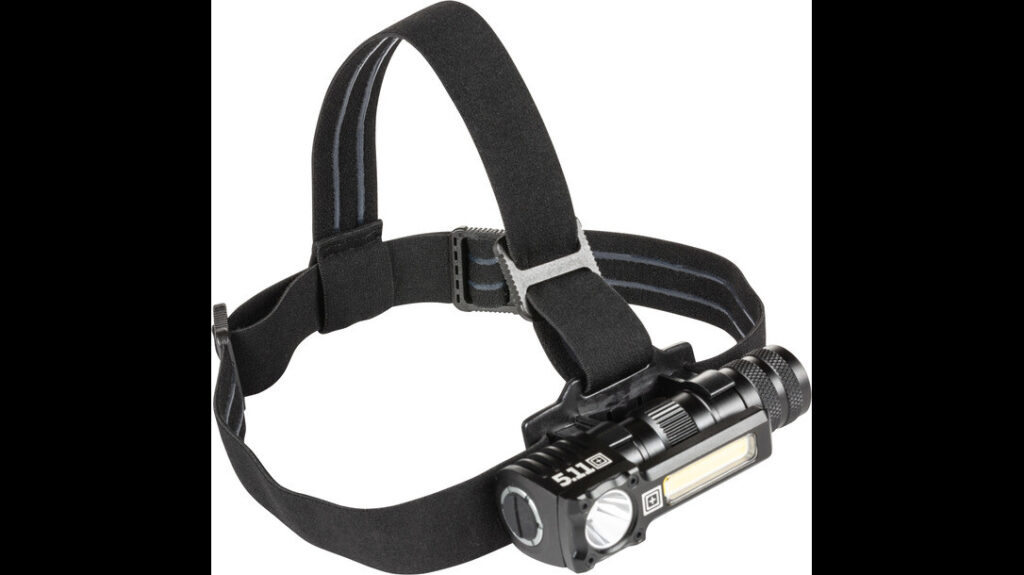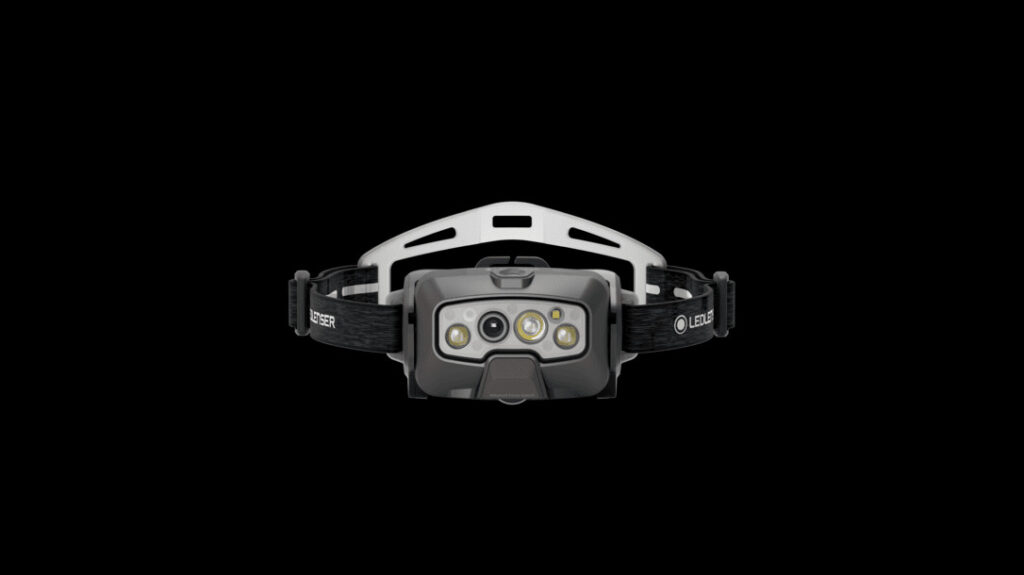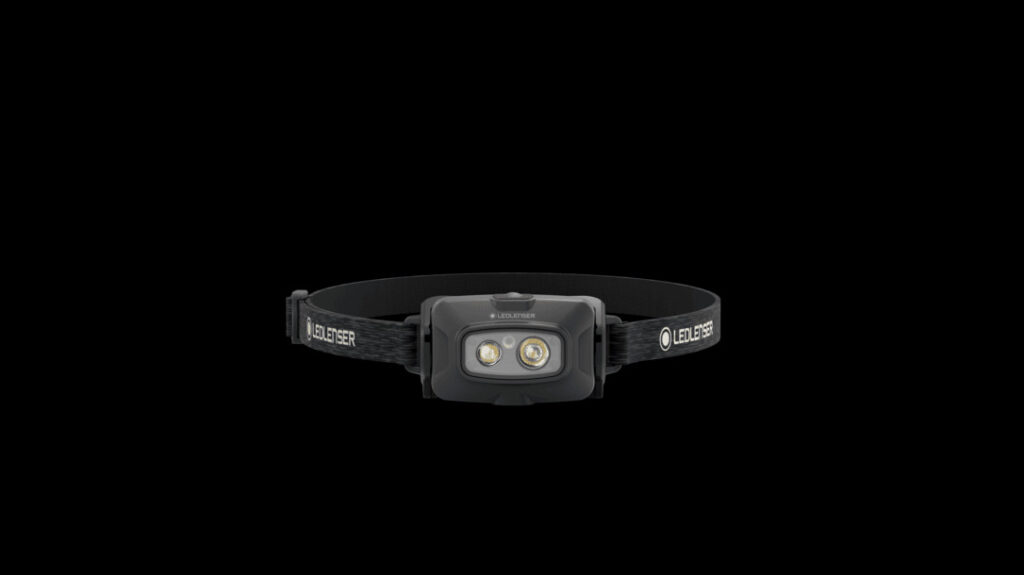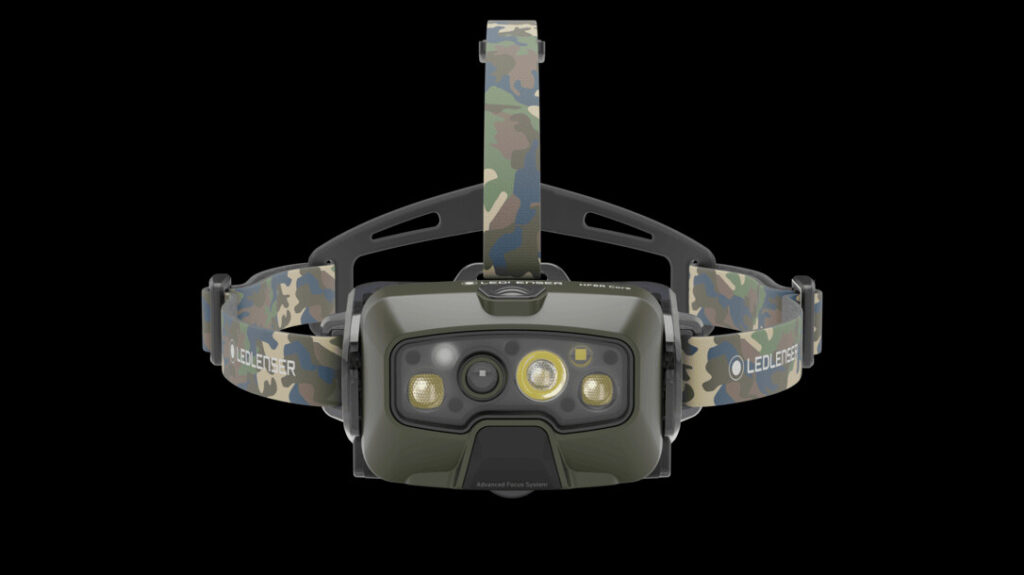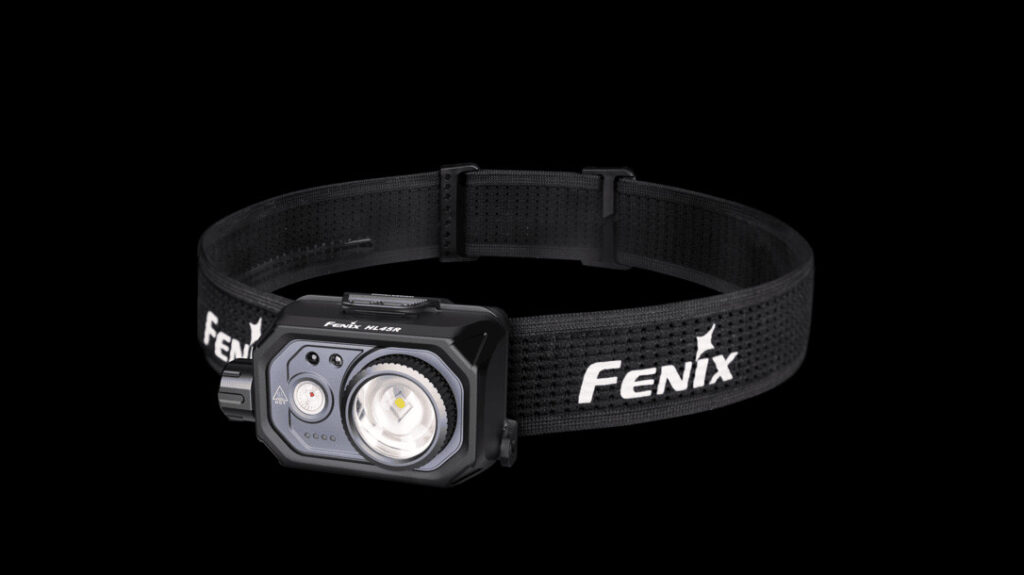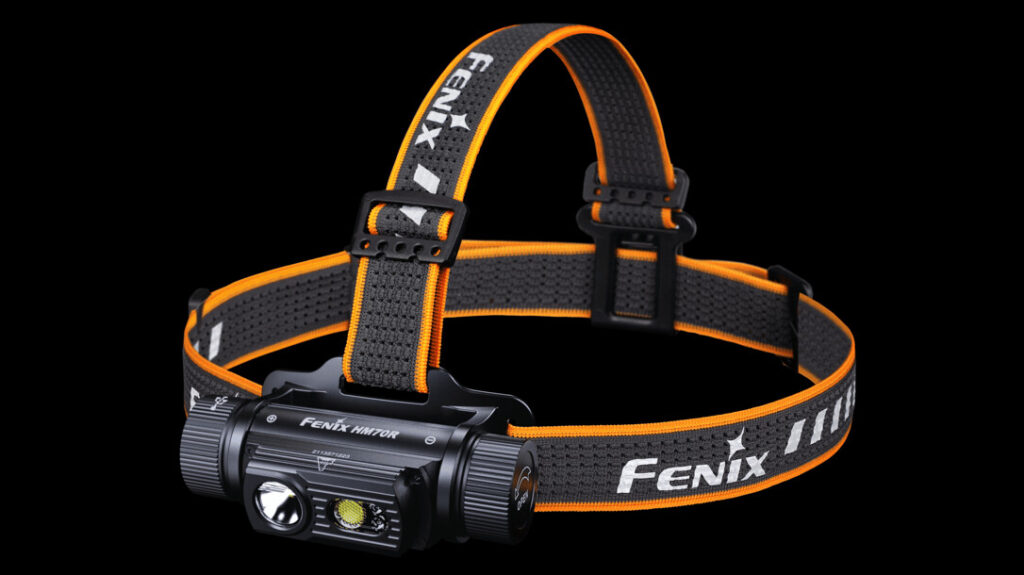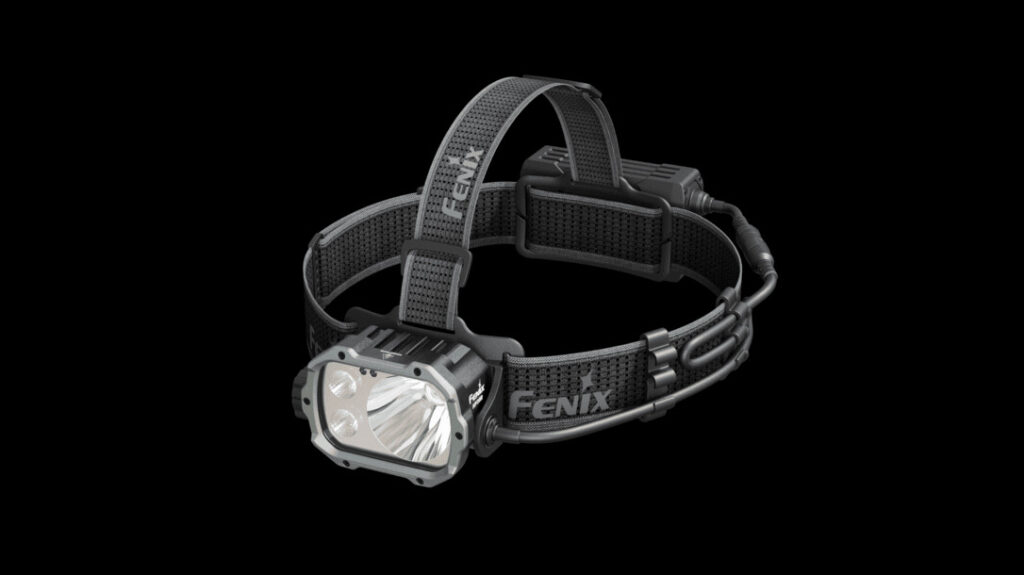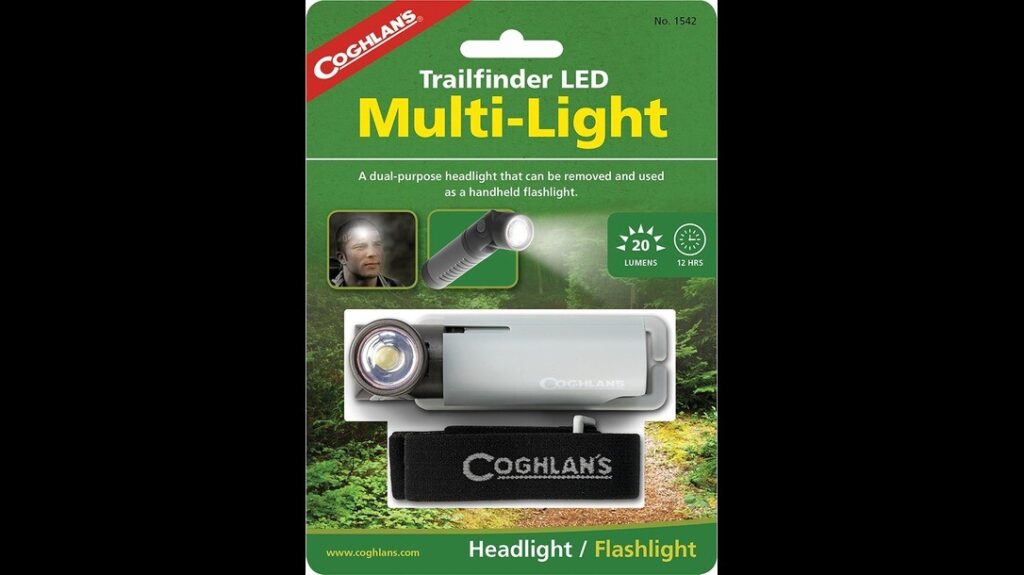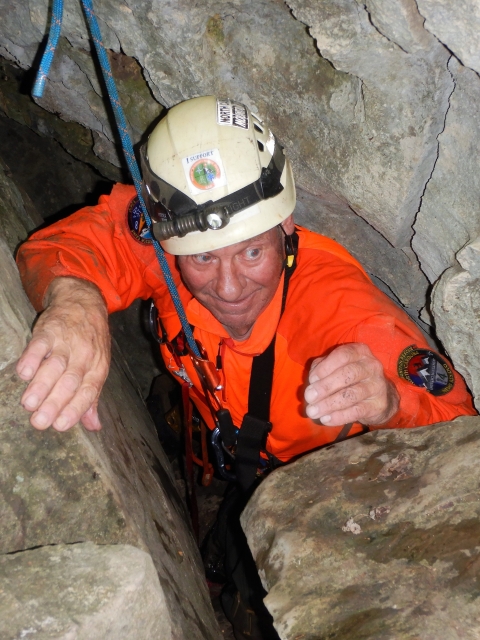Imagine carrying tools for hunting, fishing, fire-making, first-aid, lockpicking, and overall survival, just to name a few. Then have them fit conveniently inside your pockets or within your wallet. This isn’t only wishful thinking, it’s reality with the Grim Workshop’s vast array of card-sized tools. They excel at individual task-specific cards and fully themed mini kits.
Who Is Grim Workshop?
This all-American-made micro gear company excels at keeping tools that work extremely well on your person at all times. Here, we’ll dive deep into this company’s philosophy. We will explore Grim Workshop’s Texan, get-down-n-dirty approach to producing what’s needed. Finally, you’ll see their vast inventory and what you may need to complete your ultimate survival assembly.
The Grim Philosophy
Simply put, The Grim Workshop’s underlying philosophy is simple, direct, and what everyone should strive for in their gear. Specifically, being reusable, compact, and functional. You can remove all parts and return them to their original position, thanks to Grim’s ingenious Tool Retention System. You can also reuse them time and time again.
When it comes to compactness, you can’t get better than just 1 mm-thick cards. The cards store flat and are no larger than a typical credit card.
Functionality is where Grim Workshop takes the top prize. Their cards run the gamut of categories such as survival, hunting, and trapping. As well as minor sub-categories such as cooking, meal use, lock-picking, sewing, first-aid, and cutting. There’s no fluff here, only workable, hardcore tools that stand up to the rigors of heavy outdoor use.

Extensive Variety
What makes Grim Workshop’s products so invaluable to any adventurer is not just their durability or their ingenious design. It’s their sheer variety and the number of tools they offer. These cards are useful in dense forests, along a coastline, or navigating the streets of the concrete jungle. Simply put, they offer numerous tool cards that suit just about any environment.
They offer both individual cards and tin closable container kits (think Altoid-sized tins). The single card offerings include deep woods favorites like their spring snare and the fishing card. Grim’s signature survival card, their bushcraft card, and their highly interesting multi-spear card are deep woods essentials.
Some of the components of these cards include a spearhead, fishing hooks, and a small knife. While others offer lures, hooks, sharpeners, sewing needles, and much more. All are reusable and are constructed to take a beating out in the field.

Concrete jungle applications
Urban dwellers aren’t left out when it comes to useful, easy-to-carry gear, as their location-specific cards offer a variety of lock picks, universal handcuff keys, a bypass tool card, and escape and evasion tools, such as mini saws and “pry-bar” cards.
When it comes to kits, Grim gives you a handful of themed cards and gear, all contained within a durable metal containment tin. From a few cards up to a complete survival bundle, Grim Workshop truly does have something for everyone, no matter what outdoor activity they prefer.
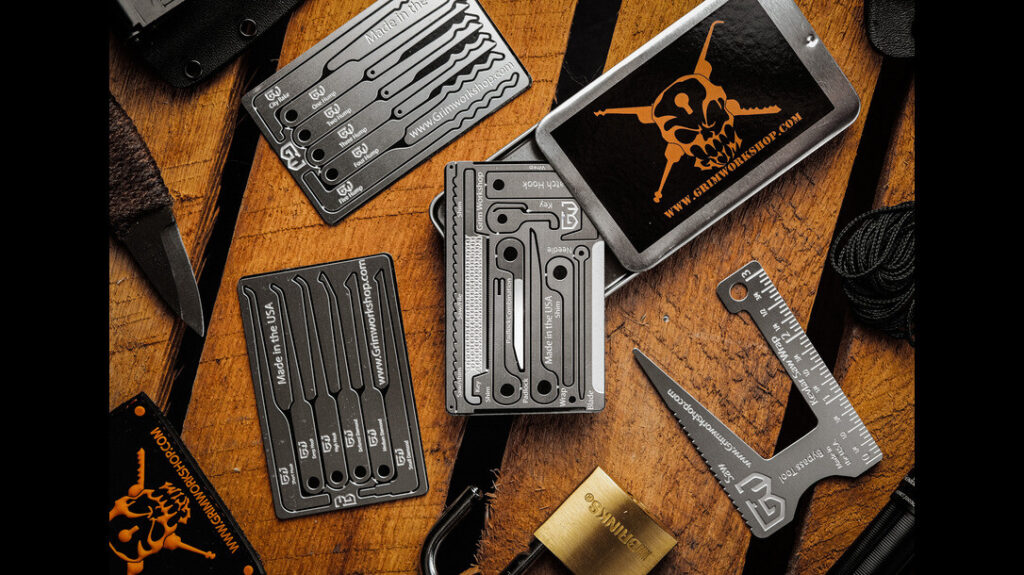
Incredible Oddities
Aside from their card and kits, Grim Workshop has products that few other companies offer, and these can be classified as unconventional necessities. Their Cordage Making Dog Tag is one such item. This compact tool allows you to make usable cordage from plastic water and soda bottles. It’s lightweight, compact, and built to last under harsh outdoor use. The cordage maker is used to create dozens of feet of strong cordage using basically discarded trash found throughout most environments.
Grim’s glow card is another specialized addition that provides a pleasing glow for up to ten full hours. It’s rechargeable, waterproof, UV resistant, and like most of Grim’s card tools, fits easily inside your wallet.
In addition, the Firefly series consists of three tools designed to assist with fire building. And, like everything else in the Gim Workshop line, they all fit in your pocket.
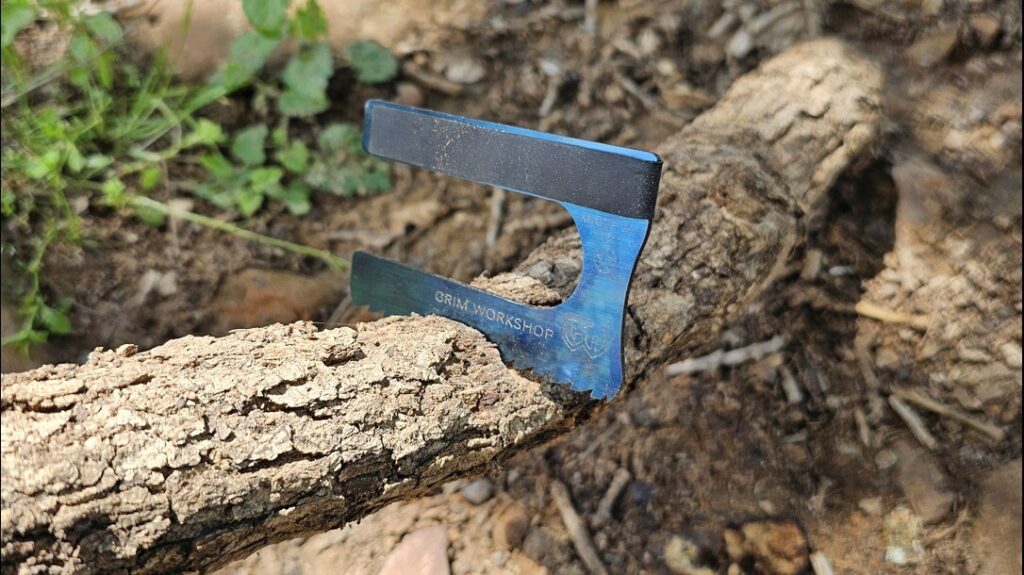
Dog tags, weapons, and more!
Other unique items include tool-filled dog tags that hang around your neck, a slingshot card that can be used to acquire food in the wild, and a credit card-sized water purification kit (yes, it’s hard to believe) that contains a clear water purification bag and water purification tablet.
As they say, there’s more, much more when it comes to Grim’s extensive product line. Stash cards that hold various themed gear, matches that mimic the dimensions of a credit card, and survival cards that feature survival tips and tricks are all available for anyone who wants literal tools at their fingertips.
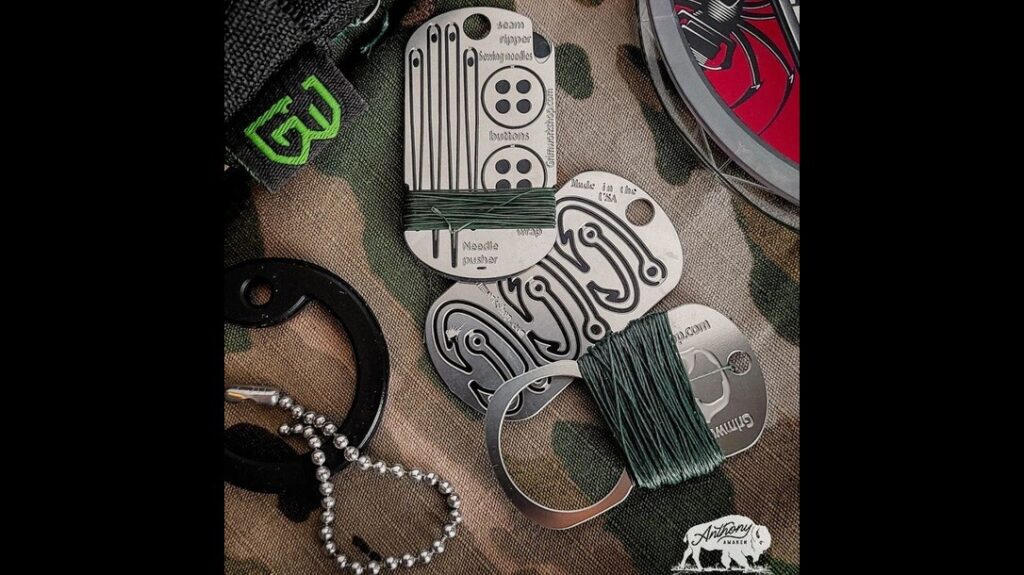
A brand you can trust
With Grim Workshop, the simple line, Made in the USA, isn’t just a throwaway cliche. The slogan isn’t a hook to market their products to prospective consumers, either. In reality, it’s their mantra. It correlates to superior quality, superior craftsmanship, and good old American reliability.
Keep in mind that the entire process, from an initial idea to the final product available for sale, is all USA-based. From conception to prototyping, to sourcing the steel and manufacturing, nothing happens outside the US borders, and that means a lot in today’s day and age.
Personally, I have used Grim Workshop’s cards with amazing success in the past. I will continue to do so in the present and in the foreseeable future. It’s time to pull the trigger and try some tool cards for yourself. Before you know it, you’ll have the best hand in town!
